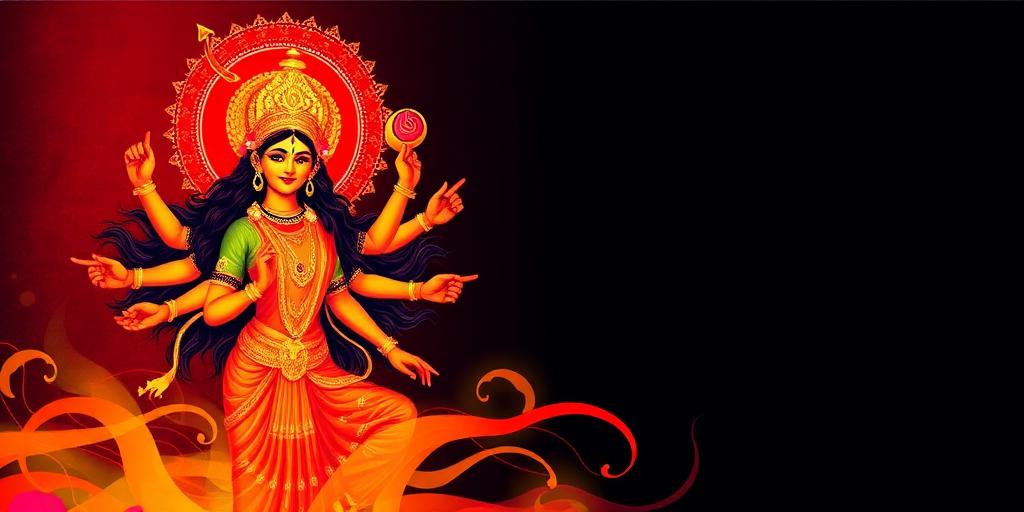Navratri, a festival deeply rooted in Hindu tradition, is a celebration of the Divine Feminine, or Shakti. This nine-night festival is not merely a series of rituals but a profound journey into understanding the multifaceted nature of feminine energy and its significance in maintaining cosmic balance.
The term 'Navratri' literally translates to 'nine nights' in Sanskrit. Each night is dedicated to a different form of the goddess Durga, collectively representing the various aspects of Shakti. These forms include:
- Shailputri: The daughter of the mountains, embodying purity and devotion.
- Brahmacharini: Representing austerity and penance, she symbolizes spiritual pursuit.
- Chandraghanta: Known for her fierce form and readiness for war against evil, she embodies courage.
- Kushmanda: The creator of the universe, representing the power of creation and life.
- Skandamata: The mother of Skanda (Kartikeya), symbolizing maternal love and protection.
- Katyayani: A warrior goddess, representing strength and righteous anger.
- Kalratri: The dark night, representing the destruction of ignorance and illusion.
- Mahagauri: Symbolizing purity and tranquility, she represents peace and serenity.
- Siddhidhatri: The giver of accomplishments, representing perfection and fulfillment.
The worship of these nine forms is a symbolic journey of self-discovery and spiritual evolution. Each goddess represents qualities that devotees aspire to cultivate within themselves. Through prayers, fasting, and various rituals, practitioners seek to invoke the power of Shakti to overcome obstacles and attain inner peace.
Navratri is more than just a religious observance; it is a cultural phenomenon that emphasizes the importance of feminine power in sustaining the universe. It serves as a reminder of the strength, resilience, and nurturing qualities inherent in women. The festival underscores the necessity of recognizing and respecting the Divine Feminine in all aspects of life, promoting a balanced and harmonious society.
Different regions of India celebrate Navratri in unique ways. In Gujarat, the traditional dance form of Garba is performed, symbolizing the circle of life and unity. In West Bengal, Durga Puja is the highlight, marked by elaborate pandals (temporary structures) showcasing artistic representations of the goddess. Each celebration reflects the local traditions and cultural values, adding to the rich tapestry of Navratri.
Understanding Navratri requires acknowledging the philosophical underpinnings of Shakti worship. The Divine Feminine is not merely a deity but a representation of the dynamic energy that permeates the cosmos. She is the power behind creation, preservation, and destruction – the eternal force that drives the universe forward. By venerating the goddess during Navratri, devotees seek to align themselves with this cosmic energy, fostering spiritual growth and transformation.
In conclusion, Navratri is a powerful testament to the significance of the Divine Feminine. It is a time to reflect on the qualities of strength, wisdom, and compassion embodied by the goddess and to recognize their importance in our lives. This festival serves as a reminder of the need to honor and respect the feminine principle, ensuring a balanced and harmonious world.









